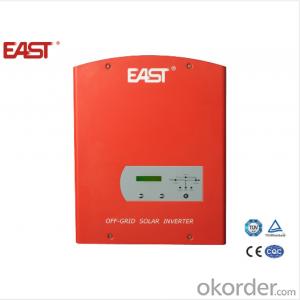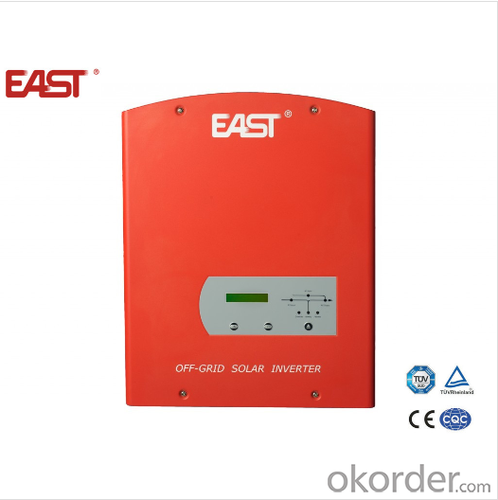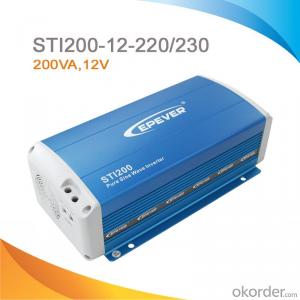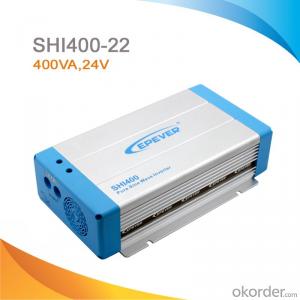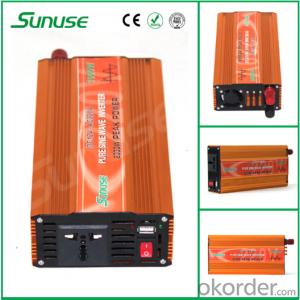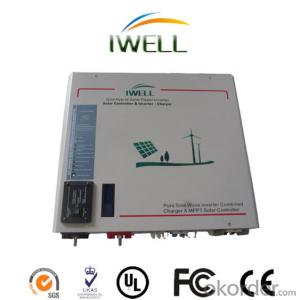Off Grid Solar 12V 220V Pure Sine Wave Inverter 500W to 2400W with MPPT Charge Controller PF 0.8
- Loading Port:
- Qingdao
- Payment Terms:
- TT or LC
- Min Order Qty:
- 50 unit
- Supply Capability:
- 30000 unit/month
OKorder Service Pledge
OKorder Financial Service
You Might Also Like
1. Structure of Off Grid Solar 12v 220v Pure Sine Wave Inverter 500W to 2400W with MPPT Charge Controller PF 0.8
A solar inverter, or PV inverter, or Solar converter, converts the variable direct current (DC) output of a photovoltaic (PV) solar panel into a utility frequency alternating current (AC) that can be fed into a commercial electrical grid or used by a local, off-grid electrical network.
It is a critical BOS–component in a photovoltaic system, allowing the use of ordinary AC-powered equipment.
Solar inverters have special functions adapted for use with photovoltaic arrays, including maximum power point tracking and anti-islanding protection.
2. Main Features of the Off Grid Solar 12v 220v Pure Sine Wave Inverter 500W to 2400W with MPPT Charge Controller PF 0.8
﹒Multi-Setting
﹒High Reliability: Double CPU Digital Control
﹒Isolated and Pure Sine Wave Technique
﹒LCD+LED Display Mode
﹒Wide Input Range
﹒High-Speed Synchronous Conversion
﹒Friendly Alarm System
﹒Online Protection Function
﹒Intelligent No-Load Auto Shutdown Technology
3. Off Grid Solar 12v 220v Pure Sine Wave Inverter 500W to 2400W with MPPT Charge Controller PF 0.8 Images
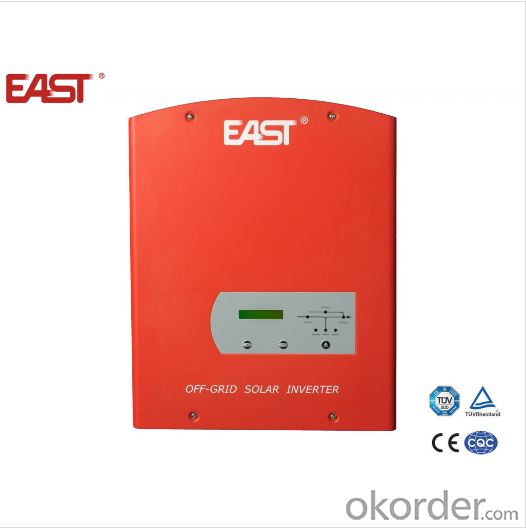

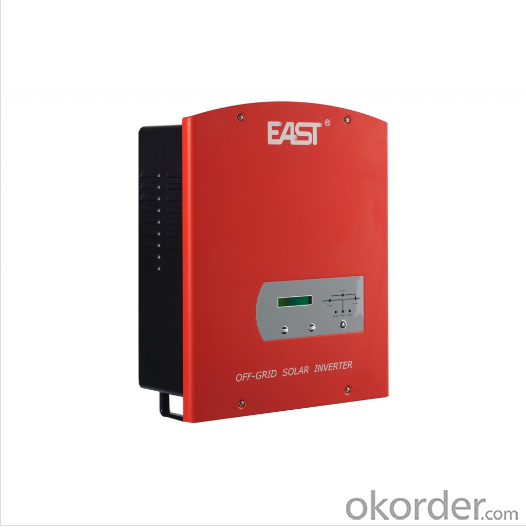
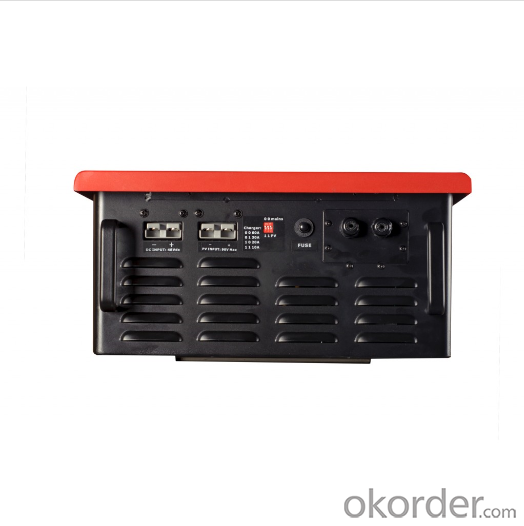
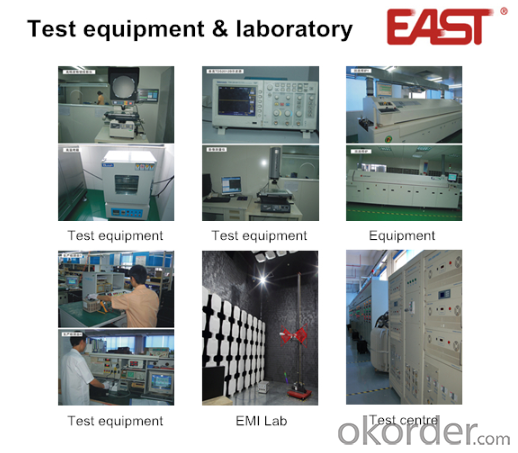
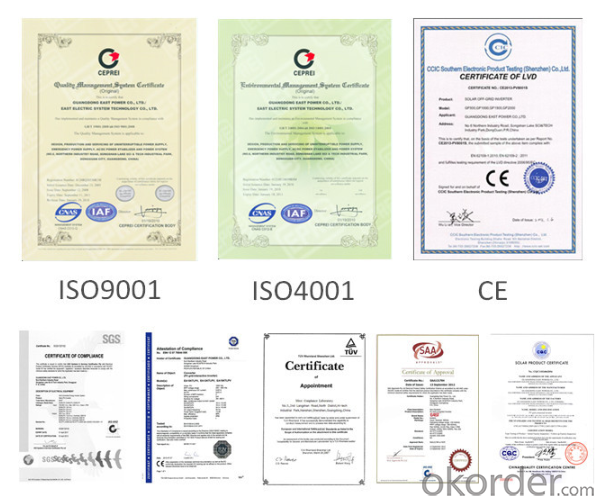
4. Off Grid Solar 12v 220v Pure Sine Wave Inverter 500W to 2400W with MPPT Charge Controller PF 0.8 Specification
Model | GF500 | GF1000 | GF1500 | GF2000 | GF2400 | ||
Capacity | 500VA | 1000VA | 1500VA | 2000VA | 2400VA | ||
Power | 500W | 1000W | 1500W | 2000W | 2400W | ||
Battery voltage/ range | 24Vdc/21-30Vdc | 48Vdc/42-60Vdc | |||||
Working mode | PV(Photovoltaic priority) / AC(AC priority) Optional | ||||||
PV | MPPT voltage range | 24Vdc~ 45Vdc | 48 Vdc ~ 90Vdc | ||||
Max. charge current | 10A/20A/30A/40A (option offered) | 10A/20A/30A/60A | |||||
Conversion efficiency | ≥ 98 % | ||||||
Display | Panel indicator light | LCD + LED display | |||||
Mains status(Optional) | Input voltage range | 100V/110V/120V/220V/230V/240V±25%(Customized) | |||||
Input Frequency range | 45-65 Hz(Automatically transfer to inverter power when overfrequency) | ||||||
Output voltage range | 100V/110V/120V/220V/230V/240V± 10% | ||||||
Input PF.(AC/DC) | 98% | ||||||
charge current | 15Amax(PV Charging current≤Rated 25% battery≤90%) | ||||||
Efficiency | Mains mode≥ 96% | ||||||
Mains overload | 110% 60s transfer to bypass power; 120% transfer to bypass power supply after 30s;automatically recover when decrease load | ||||||
Short circuit | Input fuse | ||||||
Inverter output | Inverter output voltage | 100V/110V/120V/220V/230V/240V± 5% | |||||
Output frequency | 50 Hz / 60Hz ± 1% frequency adaptive | ||||||
Output power factor | 0.8 | ||||||
Wave form distortion | Linear load≤ 5% | ||||||
PV-AC transfer time | 5Ms typical value Max.8 Ms | ||||||
Max.Efficiency | 84.50% | ||||||
Inverter overload | 110% shutdown at 60s,120% shutdown at 5s | ||||||
No-load off | Load< 5% The system automatically shut down at 1MIN, transfer to bypass power supply | ||||||
(Optional) | |||||||
Short circuit | Systems automatically shut down | ||||||
Alarm | Mains abnormal | 1/4S; automatic sound elimination after 40s | |||||
Low battery | 1 / 0.2S | ||||||
Overload | 1 / 1S | ||||||
Communication interface (Optional) | RS232 / USB / SNMP(Setup available for regular start/shutoff) | ||||||
Others | Output sockets | Universal sockets 3PCS / customized | |||||
Surge protection | Optional | ||||||
EMC | EN62040-2:2006;EA61000-3-2:2006; EA61000-3-3:2008 | ||||||
IP class | IP20 | ||||||
Ambient temperature | 0°C ~ 40°C | ||||||
Ambient humidity | 10% ~ 90%(Non Condensed) | ||||||
Noise | ≤ 50dB | ||||||
Dimension | Hanging | 380*195*478 | |||||
D*W*H(mm) | Tower | 420×145×215 | 475×200×337 | ||||
Packing dimension(mm) | Hanging | 455*255*522 | |||||
Tower | 515×236×316 | 592×320×462 | |||||
Weight(kg) | 11 | 13 | 18.8 | 23.7 | 27 | ||
Packing weight(kg) | 11.8 | 13.8 | 20 | 25 | 28.2 | ||
5. FAQ of Off Grid Solar 12v 220v Pure Sine Wave Inverter 500W to 2400W with MPPT Charge Controller PF 0.8
Q1. What is the difference between inverter and solar inverter?
A1. Inverter only has AC inpput, but solar inverter both connect to AC input and solar panel, it saves more power.
Q2. What is the difference between MPPT&PWM?
A2. MPPT has higher efficiency, it can track the max power point and won't waste energy.
Q3. What is the waranty of product?
A3. 12 months.
- Q: How does a solar inverter handle harmonics in the grid?
- A solar inverter handles harmonics in the grid by incorporating filters and control algorithms that mitigate the impact of harmonics. These filters help in reducing the distortion caused by harmonics, ensuring that the solar inverter operates efficiently and does not introduce additional harmonics into the grid. The control algorithms continuously monitor the grid's harmonics and adjust the inverter's output accordingly to maintain compliance with the grid's harmonic standards.
- Q: Is the grid side of the grid and the inverter?
- The grid load side of the grid is the grid. The inverter is an important part of the PV grid-connected system and can not be regarded as an external load. Photovoltaic power generation system is included in both grid and off-grid.
- Q: After the PV inverter, how to achieve the same period before the network?
- It can automatically detect the generator and the grid frequency and voltage, in the frequency, voltage, phase are in line with the requirements of the grid to set the time before the release of the closing signal, so that it can be safely and securely connected.
- Q: Can a solar inverter be used with dual-axis solar trackers?
- Yes, a solar inverter can be used with dual-axis solar trackers. The dual-axis solar trackers continuously adjust the position of the solar panels to optimize sun exposure throughout the day. The solar inverter is responsible for converting the DC power generated by the solar panels into AC power for use in residential or commercial applications. Therefore, the solar inverter can be easily integrated with dual-axis solar trackers to ensure efficient power generation and utilization.
- Q: How does a solar inverter handle grid disturbances (voltage sags, swells, flickers)?
- A solar inverter handles grid disturbances such as voltage sags, swells, and flickers by constantly monitoring the grid's voltage and frequency. When a disturbance occurs, the inverter utilizes its internal control mechanisms to adjust the solar power output accordingly. It can compensate for voltage sags by injecting additional power into the grid, and it can reduce power output during voltage swells to prevent overloading. Additionally, the inverter's control algorithms help minimize flickering by maintaining a stable and consistent power supply to the grid.
- Q: How does a solar inverter protect against lightning strikes?
- A solar inverter typically protects against lightning strikes by incorporating surge protection devices and grounding systems. These features help to divert the excess energy caused by a lightning strike away from the sensitive electronic components of the inverter, preventing damage and potential electrical hazards.
- Q: How does a solar inverter handle fluctuations in solar panel output due to temperature changes?
- A solar inverter handles fluctuations in solar panel output due to temperature changes by employing a maximum power point tracking (MPPT) algorithm. This algorithm continuously monitors the output of the solar panels and adjusts the operating conditions of the inverter to extract the maximum power available. As temperature changes, the MPPT algorithm adapts the inverter's parameters to optimize the energy conversion process and ensure the highest possible efficiency. By dynamically adjusting the voltage and current levels, a solar inverter effectively mitigates the impact of temperature fluctuations on the solar panel's output.
- Q: How does a solar inverter handle voltage sag and swell?
- A solar inverter handles voltage sag and swell by utilizing its power conditioning capabilities. When it detects a voltage sag (a temporary decrease in voltage), the inverter adjusts its internal control algorithms to provide a stable and consistent output voltage to the connected loads. Similarly, in the case of voltage swell (a temporary increase in voltage), the inverter modifies its operation to prevent overvoltage conditions and ensure a safe and regulated output. Through continuous monitoring and intelligent control, a solar inverter effectively manages voltage fluctuations to maintain stable power delivery.
- Q: Can a solar inverter be used with a net metering system?
- Yes, a solar inverter can be used with a net metering system. In fact, a solar inverter is an essential component of a net metering system. It converts the direct current (DC) electricity generated by the solar panels into alternating current (AC) electricity that can be used to power the home or business. The excess electricity produced by the solar panels is fed back into the grid through the net meter, allowing the utility company to credit the owner for the excess energy produced.
- Q: How is the size of a solar inverter determined?
- The size of a solar inverter is determined based on the maximum power output of the solar panels connected to it. It should match or exceed the total capacity of the solar panels to ensure optimal performance and avoid any power limitations.
Send your message to us
Off Grid Solar 12V 220V Pure Sine Wave Inverter 500W to 2400W with MPPT Charge Controller PF 0.8
- Loading Port:
- Qingdao
- Payment Terms:
- TT or LC
- Min Order Qty:
- 50 unit
- Supply Capability:
- 30000 unit/month
OKorder Service Pledge
OKorder Financial Service
Similar products
Hot products
Hot Searches
Related keywords
